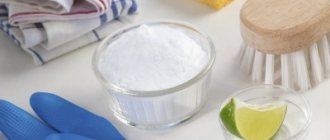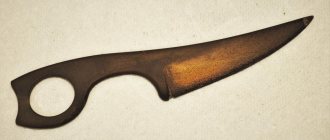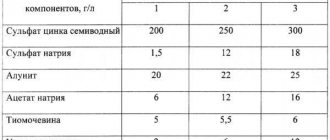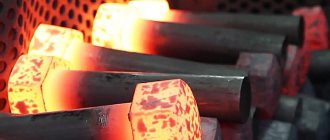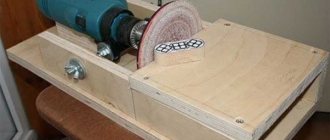Red traces of rust will not be a problem if you approach the issue of removing them in a timely and competent manner.
There are a sufficient number of folk and professional remedies, among which one can highlight one that is most effective for removing rust and safe for human health - citric acid.
This is a tool accessible to everyone that allows you to quickly get rid of rust stains from almost any surface.
Materials
- Powdered citric acid – sold at a grocery store or pharmacy if you don’t have it at home.
- A container where we will place steel objects for restoration.
- A scraper, like a spatula. Or a metal brush.
For security:
- Latex gloves.
- Protective glasses.
Benefits of using citric acid:
- Does not remove paint on surfaces.
- The reaction is completely controlled.
- Very affordable - almost always available in the kitchen.
- After use, you can pour it into the sink.
- Much cheaper than sandpaper and surface restorer.
Lemon and salt
Method: Sprinkle a generous layer of salt over the rusted area, cut a lemon (or lime) in half and squeeze the juice over the salt. Let the mixture sit, then wipe off the rust. If the rust remains, repeat the procedure and let the salt and juice sit for another hour or two until the rust is completely gone. Rinse, then dry.
Pros: Minimal abrasive process, uses ingredients you likely already have at home.
Cons: If you're cleaning rust from a kitchen knife, the process can be tricky and you might cut yourself. Be sure to wear protective gloves or work on a level surface to reduce the risk of accidents.
Will lemon juice help against corrosion?
The product of the corrosion process, rust, gradually penetrates the metal structure, destroying it.
Not only can you remove red stains, but you can also temporarily stop the oxidation process by cleaning with citric acid. It interacts with the formed iron oxides and neutralizes oxidation reactions.
"Limonnka" is an effective means of removing rust stains from:
- metal,
- glass,
- ceramic surfaces,
- clothes.
Most often, an acidic solution is used in cleaning:
- car body,
- plumbing in the house,
- old coins.
The only point worth remembering when choosing citric acid to remove rust stains: an acidic solution is effective only if used in a timely manner (as soon as the stain appears).
Citric acid may be powerless against old, stubborn stains.
Pros and cons of cleaning
In comparison with other methods and means of rust removal, citric acid has a number of positive properties:
- Maximum availability of the product (citric acid is available in every kitchen; if necessary, you can simply buy it at the grocery store).
- After cleaning is completed, the acidic solution can be disposed of down the drain (thus providing additional cleaning of the pipes).
- Unlike professional chemical rust removers, the cost of a bag of citric acid is low and affordable to everyone.
- When in contact with a painted surface, the acidic solution does not violate its integrity.
- If desired, you can always stop the cleaning process (just move the item with rust from the acidic solution to soda water).
- During the heating process, they will not emit toxic fumes that are hazardous to human health and the environment.
Disadvantages of using citric acid:
For very strong, old rust stains, it is ineffective (requires repeating the cleaning process).- A high concentration acidic solution can cause loss of color and even the integrity of the treated surface.
- After cleaning with citric acid, the remaining product must be thoroughly removed with a clean sponge or cloth.
- If a product with rust stains has rubber inserts or seals, then citric acid can destroy them during the reading process.
Despite all the positive properties of citric acid, it is best to carry out work on removing rust stains while wearing protective glasses and gloves. The thing is that when scraped, small particles of rusty plaque scatter in all directions and can injure the mucous membranes and skin.
Lemon acid
To clean rust that has appeared on the toilet, you can use a recipe using citric acid that has been around for many years. The algorithm of actions is as follows:
- Drain all the water from the toilet and dry it.
- Sprinkle citric acid liberally onto a damp paper towel.
- Cover the inside of the toilet with towels so that the citric acid comes into contact with the rust. Leave it like this overnight for interaction. Overnight, the acid will eat away all the rusty stains without damaging the surface of the toilet.
- In the morning, wash off the towels and, if necessary, clean off any remaining dirt with a brush.
How to remove rusty deposits?
Working with citric acid is quite simple. To achieve the maximum effect of removing rusty stains, you must adhere to a certain algorithm of actions:
- pour citric acid powder into a container with warm water (80 grams of dry ingredient is enough for 100 ml of liquid);
- the product with rust is dipped into the prepared solution and left for two hours (after only five minutes you can see small bubbles on the surface, indicating the beginning of the necessary reaction);
- Afterwards, the already cleaned product is removed from the solution and washed thoroughly under clean running water; if necessary, rusty stains can be cleaned with a brush.
After cleaning, the wet surface must be thoroughly wiped dry with a paper towel or clean rag.
What else can you add to enhance the effect?
You can speed up the process of cleaning the surface from rusty deposits by adding hydrogen peroxide and salt to citric acid.
Algorithm of actions:
- In a clean container, mix citric acid (50 g), hydrogen peroxide (100 ml) and table salt (1 tbsp).
- The resulting mixture is applied to the rust stain and left for fifty to sixty minutes.
- Afterwards, wipe the product with a clean cloth, removing rusty deposits along with any remaining cleaning agent.
Using this product may slightly change the color of the metal surface to a darker one.
Cleaning the surface of parts
The first thing to do is to clean the surfaces from dirt and degrease. To do this, you can use a washing sponge, a dishwashing net and detergent.
We wash and clean the surfaces of parts and tools before restoring and removing rust.
Preventing rust
To prevent the appearance and further development of corrosion stains on iron coatings, it is necessary to practice prevention. The most effective preventative method is painting iron objects. Some people use special anti-corrosion compounds instead of paint, which after application form a protective film on the treated surface.
People also often use primer enamel, which protects metal structures and prevents the appearance of corrosive deposits on their surface. You can apply enamel or paint with a regular brush or roller if the product is too large.
Coca Cola
- If rust has formed at the bottom of the toilet where the water is, then you need to drain all the water and fill in Coca-Cola instead.
- Leave for several hours.
- After the waiting time, drain the water and clean with a brush.
- If the rust has spread greatly, then this method should be strengthened by heating Coca-Cola.
- The drink should be heated in an open container, since a closed container will create high pressure due to high carbonation.
Remember to wear gloves when cleaning the toilet, and wash your hands with antibacterial soap after cleaning.
Cleaning using folk remedies
If you don’t want to struggle with mechanical rust removal, you can use proven folk methods.
Acetic acid
It is better to use 70% acetic acid. Then the result will be more noticeable. If there is little rust, then sometimes regular 9% table vinegar is enough.
To remove corrosion and “time deposits” you need to follow a few simple steps:
- Pour the required amount of acetic acid into a deep container so that it completely covers the instrument.
Healthy! For this processing, it is best to use a plastic container that closes tightly with a lid.
- Place rusty products in a container and cover everything with a lid.
Screenshot of a video from the ARS Pro channel https://www.youtube.com/watch?v=0E6kY9JMggE
Tools should be left in this condition for several days (the duration of cleaning depends on the intensity of the contamination). After this you can open the lid. The peeling rust will be clearly visible underneath.
Vinegar cleans metal from rust and oxides
This product will definitely be found in any kitchen. To achieve ideal cleaning results, it is better to use white vinegar. A metal rust remover effectively cleans it without compromising the integrity of other surfaces.
- Pour white vinegar into a container large enough to fit the spoiled item.
- Immerse the product in a container with product. Do not dilute the solution.
- Leave the item in the container of white vinegar until the corrosion has weakened enough to be easily removed.
- Put on rubber gloves, remove the product from the solution and clean with a wire brush.
- Rinse the metal well, then dry.
In fact, the whole process goes very quickly, because while the metal is soaking, you can do laundry or spend time with your loved ones.
Baking soda
Method: Rinse the metal object and wipe dry. Sprinkle baking soda (it will stick to wet areas), making sure to cover any rusty areas. Leave the item for an hour or so, then scrub with steel wool or a wire brush, removing the rust down to the metal. When cleaning the pan, use a dish sponge. Rinse and dry with a towel.
The method is effective for minor rust on baking sheets, thin metal, etc.
Pros: Simple method using one cheap, common product.
Cons: It takes at least an hour before you can actually start removing the rust. The key to removing rust is to use steel wool or a scouring pad, so be prepared to sweat.
Preparation of the solution
To prepare the solution, you need to take a plastic container that will hold all the rust removal items.
Pour the required amount of warm water into this container, 60 - 40 degrees Celsius. You shouldn’t overdo it with the volume of water, as you will need a lot of citric acid.
Add citric acid powder at approximately 60-80 grams per 100 ml of water. This is quite a lot and the solution will be quite concentrated. All proportions are experimental, so you can look for your golden proportion.
Pour into water and stir until completely dissolved.
Methods for chemical treatment of rusted metals
Phosphoric acid is a natural rust converter
Any rust remover contains acids. Solutions of mineral compounds – sulfuric, hydrochloric or phosphoric – are used against abundant layers. They give quick results, but require strict adherence to processing time. Overexposure causes damage to intact metal. When preparing solutions from these substances yourself, they must be diluted to a concentration of no more than 5%.
For light stains and delicate cleaning, organic acids are used - acetic, oxalic and formic. Their action can last for a long time, but at the same time the risk of harm to the item being cleaned is reduced.
Technical fluids are also used to remove rust:
- It is easy to remove only the deposit that has appeared with gasoline.
- Kerosene penetrates into the smallest cracks and gives good results when separating parts that have rusted to each other. Long-term soaking in it can eliminate serious corrosion without affecting healthy metal.
- Phosphoric acid is considered a natural rust converter. It should be applied to the damaged area and after 1-2 minutes, rinse with water and wipe dry. Forms a thin whitish protective film on the surface of pure metal.
Industrial preparations for any rust can be purchased in construction departments and automobile stores. Depending on the type of action, there are the following compositions:
- Liquids. They are used to wipe down slightly rusty objects or to water down heavier layers of rust. Contaminated tools and hardware are placed temporarily in a container filled with cleaning liquid.
- Gels and pastes. They are applied to the damaged surface, and after the time specified in the instructions, the remaining product along with the rust is removed with a rag or washed off with water.
- Sprays. Used to treat hard-to-reach places or to remove fresh traces of rust.
The properties of some industrial cleaners are worth considering in more detail.
WD-40 Rust Remover
The WD-40 product line includes formulations for rust removal and prevention.
The American company's anti-corrosion products have long been used to clean and protect any metal surfaces.
The most popular drug is in the form of an aerosol. Available in cans with a long flexible spout, thanks to which it can be sprayed in the most inconvenient places and gaps. A high degree of penetration into the smallest pores allows it to be effectively used to free rusted threaded connections. This property was the reason for giving it the common name “liquid key”.
Treating wet metal parts with it allows you to remove moisture from the surface and create a protective layer on it.
Converter "Tsinkar"
Contains manganese and zinc salts. Available in spray bottles. But according to user reviews, it is safer to apply it to the surface with a brush. When processing painted parts, it eliminates corrosion without damaging the adjacent paint layer.
NEOMID anti-rust for metal
The main application is cleaning corroded areas on car bodies. Copes with fresh and old stains. To remove thick layers, the affected area is processed several times.
Sanox cleaner
The basis is made up of compounds of citric and oxalic acids. Used to remove stains and stains on ceramics. But Sanox is also used for rust on metal. To do this, simply wipe the affected area with a swab dipped in cleaner. After completely eliminating traces of corrosion, rinse with water and dry with a rag or hairdryer.
Protective oil coating
After removing the parts from the solution, rinse them with water and dry.
The citric acid solution, in addition to removing rust, left an oxide film on the surface of the steel, which will protect the metal for a short time. But to protect the surface as much as possible, treat it with motor oil. If you don’t have a motor one, take sunflower, it will be better than nothing.
Removal Tips
Several recommendations will facilitate and speed up the process of cleaning various surfaces from rust with citric acid:
- Before treating a rust stain with an acidic solution, the surface must be degreased (for example, wiped with a sponge moistened with liquid detergent).
- A heated solution of citric acid (40 grams of dry powder per 250 ml) will help remove rust stains from fabric. It is enough to dip the stain in the heated solution for five minutes, then wash the product a second time.
- Do not exceed the recommended exposure time of the acidic solution (maximum forty-eight hours) on the rusty surface. Otherwise, the product will become covered with a white coating, which is almost impossible to get rid of.
Baking soda will help stop the aggressive effects of citric acid. It is enough to dilute two or three tablespoons of dry baking soda powder in a bucket of water and dip the rust-free product into the resulting liquid.
How to prevent re-corrosion
The return of rust can only be avoided if the surface has been thoroughly cleaned beforehand. After this procedure, the product must be thoroughly dried and covered with a protective layer. Typically, this involves immersing objects in molten metal or electroplating them in a suitable bath.
The following substances protect well from rust:
- Zinc . One of the best options. Galvanized iron is often referred to as galvanized iron. Cold electrolytic galvanizing is the most effective. If the integrity of the protective layer is damaged, the rusting of the iron occurs very quickly, since in this case a galvanic crust and oxygen are formed on the metal.
- Tin . It protects well, but only if the iron is not exposed anywhere.
- Lead . Effectively protects against hydrochloric and sulfuric acid. Lead-coated sheets are used to create roofs for chemical and gas plants.
- Copper and nickel . They protect only with a significant layer thickness.
Even despite the protective coating, any metal objects sooner or later begin to rust. How quickly this happens depends on operating conditions. To ensure that they always maintain their original appearance, proper care is necessary.
Metal surfaces should be cleaned regularly, but frequent use of strong acids or alkalis should be avoided.
Citric acid will serve as a good prophylactic agent. A solution based on it can be used to wipe many surfaces, including tiles, enamel accessories, plumbing fixtures, taps and mixers, hoses and pipes. In cases where abrasive products are contraindicated, a better composition than citric acid cannot be found. In addition, it eliminates unpleasant odors.
Removing rust with citric acid will not damage the surface and it will remain in its original form.
Why does rust appear?
Any metal sooner or later becomes covered with rust.
Initially, in nature, metals are not mined in their pure form, but in the form of chemical compounds: carbonates, oxides, sulfides, hydroxides. These compounds contain carbon, oxygen, sulfur, water and other components.
If metals were initially pure, they would not be afraid of rust. But there are only one or two such fossils – gold, silver, platinum. They do not strive to create connections, therefore they practically do not interact with the environment, it does not have much influence on them. The rest of the metals sooner or later undergo corrosion, which has to be dealt with.
There are many ways to remove rust at home, from expensive professional ones to simpler ones that only require one component.
Heat treatment
Heat breaks down rust and is easy to remove with regular cleaning. Therefore, to combat the scourge, you can use the following tricks:
- if possible, pour boiling water over the object, wait for some time (until it cools down a little) and remove the loose layer;
- You can heat the device over a gas burner, gradually removing the easily removable deposit. To make the process faster, first apply hydrogen peroxide to the part;
- For those who have a steamer or steam mop at home, it's even easier: treat the rusty area with an intense stream of steam and scrub.
What other ways are there to combat corrosion?
There are various ways to combat corrosion.
Chemical
In this case, solvents on a natural or chemical basis are used, especially with a high concentration of alkali. The substance is applied in a thin layer to the area affected by corrosion. Next, wait for 30 minutes until the reaction passes. At the end, the treated surface is wiped dry.
Thermal
An oxy-acetylene torch will remove rust thermally.
This method requires the use of an oxy-acytene torch. It allows you to burn out the affected areas, but along with the paint.
Mechanical
Various devices are used to help remove plaque: brushes, scrapers, emery, and a grinder. These should be items with abrasive properties.
In more complex cases, when the corrosion layer is too thick, the following are used:
- orbital sander with abrasive wheels;
- sandblasting machine;
- electric drill with attachments;
- Bulgarian.
The latter tools require special skills and mandatory safety precautions.
The listed methods should only be used in well-ventilated areas.
Not all metal surfaces can be cleaned mechanically or thermally. To avoid mistakes and damage to the product, pay attention to the inscriptions or labels. If there are special symbols that prohibit machining, use a different method.
Result of rust removal
The result obtained using this method.
This method removes corrosion in all hard-to-reach places, preserving the original mark if present, which is impossible with mechanical removal of rust with sandpaper. Restored surfaces can be easily cleaned to a shine with felt or wool with Goya paste.
Original article in English
Industrial methods of prevention
In addition to forced rust removal, there are methods to prevent metal oxidation. These include:
- galvanic treatment;
- cathodic protection;
- application of inert coatings.
It is problematic to apply these methods in everyday conditions due to the lack of appropriate equipment and the complexity of technological processes.
Galvanization
The method involves depositing a thin layer of a substance that is slightly susceptible to oxidation onto ferrous metal using electrolysis. The nuance of the situation is that as soon as the protection is broken, corrosion immediately begins.
Cathodic protection
A method that involves the use of a direct current source that creates a zone of negative electrical potential on the protected surface. Successfully used on large objects (ships).
Special coatings
Protection methods using specially applied metal coatings may be no less effective than others. Typically, they are made using substances that do not react with condensation or moisture.
Galvanization
Coating with a layer of zinc perfectly protects the base metal from oxidation and makes it inert towards slightly aggressive environments. Widely used to protect body parts, in the manufacture of hardware and fasteners.
Tinning
The basis of the method is coating the metal with molten tin solder. The resulting layer resists oxidation well and prevents the spread of corrosion.
Chrome plating
It consists of applying a layer of chromium to components and parts, which is practically not susceptible to oxidation. Allows you to save money by replacing production from expensive stainless steel with production from ferrous metal followed by chrome plating.
Share link:
Alternative cleaning options
In addition to the effects of acids, rust can be eliminated using special purchased products and home recipes.
Home Recipes
The simplest options include:
Aluminum foil , which can be found in the kitchen. If you make a lump out of it and rub it over the area of corrosion, the damage will be eliminated.- Baking soda . Removes rust well. Before application, it is diluted with water to a paste, applied to the surface for half an hour, and then cleaned off.
- Hydrogen peroxide . It is suitable for removing rusty stains from plumbing fixtures and tiles.
Home remedies are recommended for minor corrosion damage, as most are less effective than store-bought medications.
Purchased funds
Special preparations for removing rust from metal surfaces can be either acid-containing or acid-free. In addition to active ingredients, the preparations contain thickeners, inhibitors and other substances.
Well-proven means include the following:
- Sonax;
- Chain mail;
- Hairdryer;
- Hi-Gear Rust Treatment and others.
Chemistry
The best and fastest way to remove rust from metal is with a converter. Chemical reagents remove corrosion even in hard-to-reach places.
The converter will save you a lot of time. The main component in such compositions is phosphoric acid and other substances that accelerate the reaction of converting rust into iron oxide, which becomes part of the protective coating.
How to remove rust:
- First, the surface should be treated with a degreasing compound.
- Then apply rust converter. Wear gloves to avoid getting the product on your hands.
- Leave the composition on the metal for 15 minutes, this is enough for the rust to turn into orthophosphate. It turns gray.
- After which the converter must be washed off with plenty of water.
Rust removal is carried out very quickly. You can remove corrosion in one go, but sometimes you need to repeat the procedure.
Zinkar rust converter is used to work with metals such as steel. Not only can it wash away corrosion, this product creates a protective film on the surface so that it does not appear again.
Formalin
A composition that you can prepare yourself will help remove corrosion from a metal surface; the main ingredient is formaldehyde in a volume of 250 g.
Also, to prepare the solution you will need 250 ml of water, 50 g of caustic soda and 50 ml of ammonia.
The resulting mixture is diluted in 1 liter of water. Objects that require cleaning are placed in this solution.
But first, all products must be degreased. After treatment, wait half an hour, then rinse and dry the products.
How to clean the surface?
To achieve a good result, rust removal must combine an integrated approach: mechanical and chemical action.
In addition, electrochemical effects can be used by passing an electric current through a special solution. This method is used more often in industrial settings, but can also be organized at home, despite the complexity of the organization.
You will find all the most useful and important information about rust removal methods and techniques in this section.
Acids
Let's look at what acids remove rust:
Lemon
Citric acid is a harmless product that will help deal with rust stains on metal, as well as on tiles and other surfaces.
At the preparation stage for cleaning, the acid is diluted with water, preparing a concentrated solution, and applied to the affected areas .
After the composition has been applied for an hour, the acid is washed off with a washcloth. This option is suitable for light stains, but will not cope with serious ones.
Read more about the use of citric acid in the fight against rust here.
Sorrel
Oxalic acid is a chemical substance that exhibits corrosion activity. This drug is effective, but poisonous. Its use must be carried out with high-quality protection, including safety glasses and a respirator. Can be used for advanced cases.
Work order:
- wash the area that needs treatment with a detergent; even laundry soap will do;
- dry the metal;
- Combine 0.3 liters in a separate container. water and 6 tsp. acid powder;
- apply the product with a brush;
- ensure contact of the solution with the metal for 40 minutes;
- clean with a brush;
- rinse under water.
Solyanaya
You can remove rust from metal using hydrochloric acid.
This method gives a good effect, allowing you to cope with even advanced cases of corrosion. Work order:
- With a rag soaked in acid, rub the surface with areas of corrosion using polishing, rubbing movements.
- Leave for half an hour.
- Wash off with plenty of water.
You need to wash off the acid especially carefully so that it does not remain on the metal at all, since it can damage the skin of your hands, even in low concentrations. It is necessary to take into account the toxicity of the drug and pay attention to personal protection.
Orthophosphoric
Phosphoric acid is one of the most effective substances for removing corrosion on metal. Due to its ability to react with corrosion products, this drug can cope with even significant damage.
Phosphoric acid is included in most rust converters. This article will tell you about the use of phosphoric acid against rust.
Vinegar
Removing rust using vinegar is a simple method that does not require significant investment. But this method will give a good effect only with unstable contamination in domestic conditions, for example, on plumbing.
The best results will be if the rusted metal objects are small and can be completely dipped in vinegar. This method is convenient for bringing bolts, nuts, etc. into proper shape.
It is recommended to use vinegar undiluted. Read more about the cleaning method here.
Baking soda is an affordable product for combating rusty plaque at home.
To prepare the cleaning composition, you need to make a non-liquid mixture, the consistency of which is like gruel.
Operating procedure:
- Using a sponge, apply the composition to the area of contamination using rubbing movements.
- The mixture is left to act for half an hour.
- Rub the metal again with a sponge or brush.
- Rinse off.
Hydrogen peroxide
Peroxide is a cheap pharmaceutical product used to disinfect wounds. In addition, this drug is actively used to remove dirt from various surfaces, and also helps to cope with rust.
Procedure:
- pour 4 tbsp into the prepared container. trisodium phosphate;
- pour in 3 liters of water;
- pour in 50 ml of peroxide very slowly, in small portions;
- Dip rusted tools or other metal objects into the container;
- leave the metal in the solution for half an hour;
- wash off the composition with water.
Recommendations for surface treatment
To ensure that rust removal has maximum effect and does not cause harm, it is recommended to use the following expert advice:
When using caustic acids and their solutions, it is necessary to use personal protective equipment, including a respirator.- It is advisable to carry out work outdoors. Or in a room with very good ventilation.
- If there is significant corrosion, it is recommended to clean the metal with a stiff brush before treating with acid.
- After washing off the acid, the metal surface must be dried.
- Several acids should not be mixed together unless specified in the recipe.


